
When severe weather strikes or after unexpected damage, the need for emergency roof repair becomes paramount. Homeowners and building managers alike face the daunting prospect of sudden roof deterioration caused by heavy winds, hail, or storm-induced debris. Emergency roofing issues not only threaten the integrity of the structure but can also lead to significant interior damage, escalating repair costs over time. Rapid intervention by a skilled emergency roofing company, such as a trusted roofing hudson, is essential to mitigate water intrusion, prevent mold growth, and protect valuable possessions. Precision roofing solutions that focus on quick, effective repairs—including services from roofing hudson—ensure that leakage, wind, and heat issues are managed before they compromise the entire building structure. With the potential for extreme weather conditions, an emergency roof repair service is crucial in preserving both aesthetic and structural integrity. This article provides comprehensive guidance on identifying urgent roof problems, immediate steps to minimize interior damage, finding qualified contractors, and understanding repair processes. The detailed overview also outlines proactive maintenance tips to prevent future emergencies, ensuring that every stakeholder—from the homeowner to the construction manager—has the information needed to act swiftly during crises. Transitioning into critical details, the following sections will break down each aspect of emergency roof repair solutions, providing actionable takeaways and expert advice for mitigating roof damage effectively.
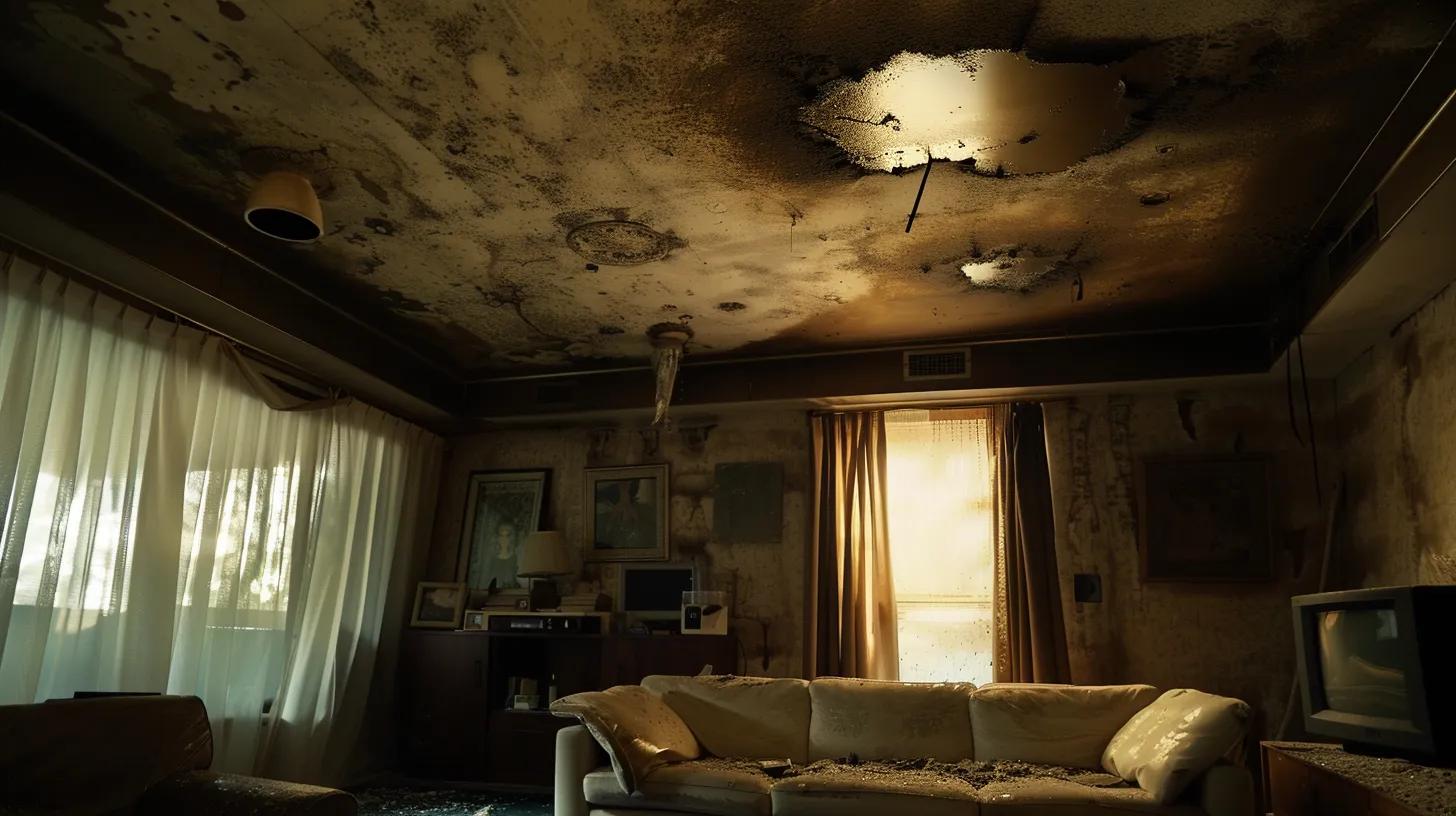
Recognizing urgent roof problems is essential to avoid further structural damage and high repair costs. The first sign of trouble often comes from visible roof leaks and water stains on interior ceilings or walls. These indicators require immediate attention because even small punctures or missing shingles can escalate into severe leaks during heavy rain or storms. Homeowners should inspect for curling or buckling shingles, which are early signs that the roof is nearing failure. Neglected issues such as these can lead to the development of mold or mildew, further compromising indoor air quality. Additionally, debris accumulation in gutters and downspouts might signal damage requiring prompt repair to prevent water backup and further infiltration into the building.
The initial and most obvious sign of a roofemergency is an active leak. Stains on the ceiling, peeling paint, or even bubbling drywall indicate continuous water damage, which weakens the roof’s structure. It is important to check for damp insulation or mold growth in ambiguous leaks, which may not only affect indoor air quality but could also indicate severe underlying damage.
After a storm, inspecting the roof for missing, cracked, or damaged shingles is critical. Storms can cause abrupt punctures and structural failures that may only become problematic during subsequent weather conditions. Professionals often recommend a thorough inspection to determine if the storm has compromised the integrity of the roof deck itself.
A roof repair emergency is defined by rapid deterioration that poses immediate risks to the structure and occupants. These emergencies include extensive water leakage, significant shingle loss, and visible structural deformations. Weather extremes, such as hail or high winds, are common triggers that require immediate intervention. Delaying repairs under these conditions can lead to escalating repair costs and potential health hazards.
Postponing emergency roof repairs can result in extensive interior damage, including ruined furnishings, weakened support structures, and mold infestations. Continuous water leakage not only erodes the roof surface but can also damage insulation and internal walls. The high risk of subsequent electrical issues and fire hazards further underscores the importance of not delaying repair work.
It is crucial to engage a professional emergencyroofing repair service at the first sign of significant damage. Early intervention during extreme weather events or upon noticing any signs of active leaks and structural degradation can dramatically reduce repair costs. A timely call to an experienced roofer ensures a rapid response, high-quality service, and peace of mind during a roofing crisis.
Key Takeaways: – Immediate leaks and water stains signal emergency roof repair needs. – Storm damage such as missing or buckled shingles should trigger urgent inspections. – Delayed repairs can lead to severe interior damage and increased costs. – Professional emergency roofing services provide quick, effective solutions.

Once an emergency roofleak is detected, the first priority is to minimize further interior damage. Quick action inside the property can mitigate the costs associated with water damage to ceilings, walls, flooring, and personal belongings. This step-by-step guide details effective temporary measures designed to protect your home until professional repairs can be implemented.
The very first step is to contain the water intrusion. Homeowners should collect buckets under leaking areas, move valuable items from affected spaces, and utilize plastic sheeting or tarps to cover furniture and flooring if necessary. Moving these items not only protects them from water damage but also prevents the spread of moisture-induced mold.
Tarping a roof is a temporary yet crucial action to prevent further water intrusion. A properly secured tarp can provide a waterproof barrier against continuing leaks. It is important to use high-quality, weather-resistant tarps and fasten them securely to prevent them from being blown away by extreme winds. If you are safe and capable, secure the tarp yourself or contact a professional emergency repair service for assistance.
Homeowners should carefully document all signs of damage by taking photographs and maintaining records of all affected areas. These images serve as essential evidence when filing insurance claims and can help expedite the claim process. Detailed records can also support repair estimates provided by contractors.
Water can interact dangerously with electrical systems, so any wet areas near outlets, wiring, or electrical panels must be evaluated immediately. Turning off power supply to the affected area might be necessary until a qualified electrician can inspect the situation. This step is critical in preventing short circuits, fires, or electrocution.
Blocked gutters and downspouts can exacerbate roof leaks by causing water to back up and further infiltrate the interior. Clearing these components ensures that water flows freely away from the structure. Routine cleaning and maintenance, especially after storms, are critical to reduce the risk of additional water damage.
Key Takeaways: – Immediate containment of water through buckets and moving valuables is essential. – Using a tarp can prevent further water intrusion until professional repairs. – Documenting the damage is critical for supporting insurance claims. – Addressing potential electrical hazards quickly prevents further risks. – Clearing gutters and downspouts helps maintain proper water drainage.
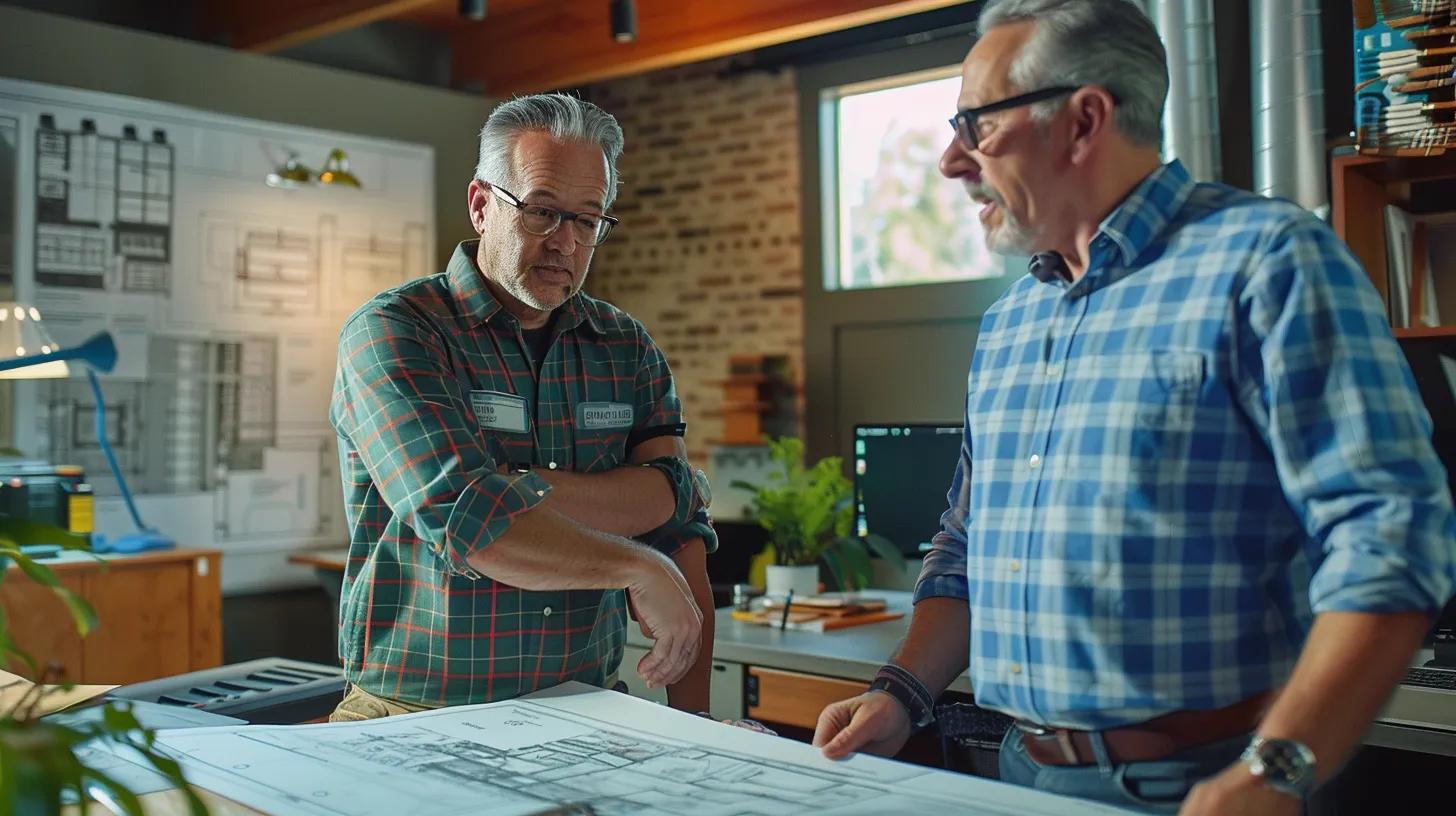
Securing the services of a qualified emergencyroofing contractor is vital to resolving critical roof damage quickly and efficiently. In emergency situations, time is of the essence, and identifying a reputable contractor makes all the difference in ensuring that repairs are completed safely and thoroughly. Homeowners should follow a series of critical steps before hiring any service, focusing on contractor qualifications, licensing, and prior performance.
When searching for an emergencyroofing contractor, look for evidence of previous successful repairs and a solid reputation for customer service. The contractor should offer prompt responses, have extensive insurance coverage, and possess a portfolio of recent emergency repairs. Client testimonials and reviews are especially useful in assessing reliability. The contractor should also have experience handling specific problems such as wind-driven leaks, hail damage, and punctures caused by falling debris.
Before finalizing the hiring process, homeowners should prepare a list of questions to assess a contractor’s expertise. Ask about the estimated timeline for repairs, the materials they plan to use, and whether they offer warranty coverage on their work. Inquire regarding their contingency plans if further damage is discovered during the repair process. These questions not only gauge the contractor’s competence but also ensure transparency.
It is imperative to verify that the contractor holds all necessary licenses and extensive insurance. Roofing repairs can be hazardous, and proper insurance protects both the homeowner and the contractor from liability. Ask for documentation of their contractor’s license, liability insurance, and worker’s compensation coverage. Contractors with verified credentials are more likely to deliver high-quality, compliant services that meet local building codes.
Obtaining multiple quotes within a short time frame is essential during a roofingemergency. Many contractors offer free estimates, which can provide a clear understanding of the costs involved. Quick and competitive quotes are not only reassuring but can also help homeowners avoid overpriced services. Detailed quotes should include labor, materials, and any additional fees related to emergency services. This information is critical for budgeting and comparing service providers.
In emergencyroofing situations, unscrupulous contractors may take advantage of distressed homeowners. It is essential to research any company you are considering thoroughly. Check for online reviews, verify their business address, and seek recommendations from trusted sources. Be cautious of contractors demanding full payment upfront or those who pressure you into making hasty commitments. Ensuring transparency in the bidding and repair process is critical to avoid scams.
Key Takeaways: – A qualified contractor should have a proven track record, verified licenses, and proper insurance. – Asking detailed questions about the repair process and timeline is essential. – Fast, competitive quotes help in managing emergency repair costs. – Reviews and recommendations are vital to avoid potential scams. – Transparency in pricing and service agreements builds trust with the contractor.
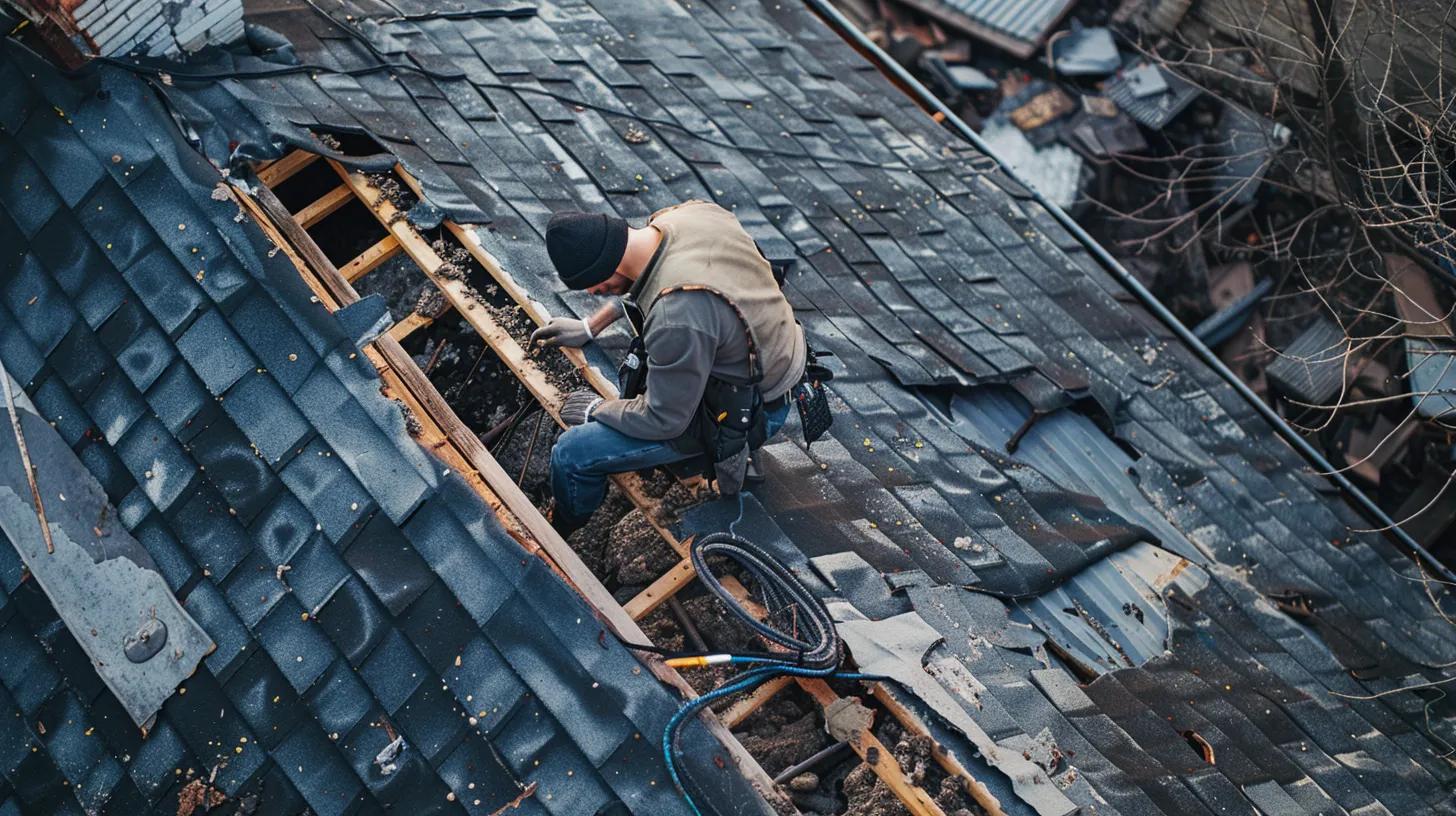
Emergency roof repairs typically encompass a range of specific issues caused by weather events, physical damage, or wear and tear over time. Understanding these common repair types and the solutions used by professionals can help homeowners better assess their situation and communicate effectively with repair providers. This section outlines several frequent scenarios, from punctures and hole repairs to issues related to flashing and tree impacts, along with actionable solutions.
Punctures or holes in the roofing material are often caused by fallen branches, debris, or storm conditions. These breaches can rapidly escalate into serious leaks if left unattended. Professional roofers repair these punctures using quality sealing compounds designed to stick securely to the roofing material. In addition, reinforcing the area with a patch and waterproof membrane ensures long-term durability. The repair method depends on the type of roof, with asphalt shingles receiving special tar-based compounds while metal roofs may require welding or specialized sealants.
Missing or damaged shingles compromise the roof’s protective barrier, allowing wind and water to seep underneath. Immediate replacement of the missing shingles is crucial. Contractors typically remove the damaged shards and install new ones that match the existing roofing material in color and style. This process not only restores the aesthetic integrity of the roof but also re-establishes effective heat and water resistance. Additionally, ensuring that the adhesive strips and underlayment are intact plays a pivotal role in achieving a robust repair.
Flashing is a key component located around chimneys, vents, and skylights that directs water away from vulnerable areas. When flashing fails, water can penetrate deeply into the structure, causing significant interior damage. Emergency roof repairs in these areas involve replacing or re-sealing the flashing, often using high-quality metal and tar compounds. Ensuring that the flashing is correctly aligned and securely fastened prevents future leaks and provides lasting protection around these critical junctions.
Fallen branches or even entire trees can inflict severe damage on a roof’s structure. In such cases, repairs may require both patch work on the roofing material and reinforcement of the underlying structure. Emergency repair solutions include the replacement of damaged sections of decking, installation of support beams, and overlaying with durable roofing materials. Structural repairs are always conducted by experienced professionals to ensure that the roof maintains its load-bearing capacity and safety standards.
Severe weather conditions often cause multiple types of damage simultaneously. Repairs might involve a combination of the above solutions—for example, addressing both missing shingles and flashing failures during a hail storm event. Emergency repair teams typically conduct a full assessment of the affected area, prioritizing critical breaches to halt ongoing water intrusion. Temporary solutions, such as tarping and patching, precede more comprehensive restoration efforts. These measures also involve the use of extreme weather-resistant materials that help the roof withstand future storms.
Key Takeaways: – Punctures and holes require sealing and patch reinforcement to prevent leaks. – Replacing damaged or missing shingles is vital for maintaining the roof barrier. – Proper flashing repair around chimneys and vents shields against water penetration. – Tree impact damage often necessitates both surface and structural repairs. – Severe weather damage is best managed through combined and immediate temporary solutions.
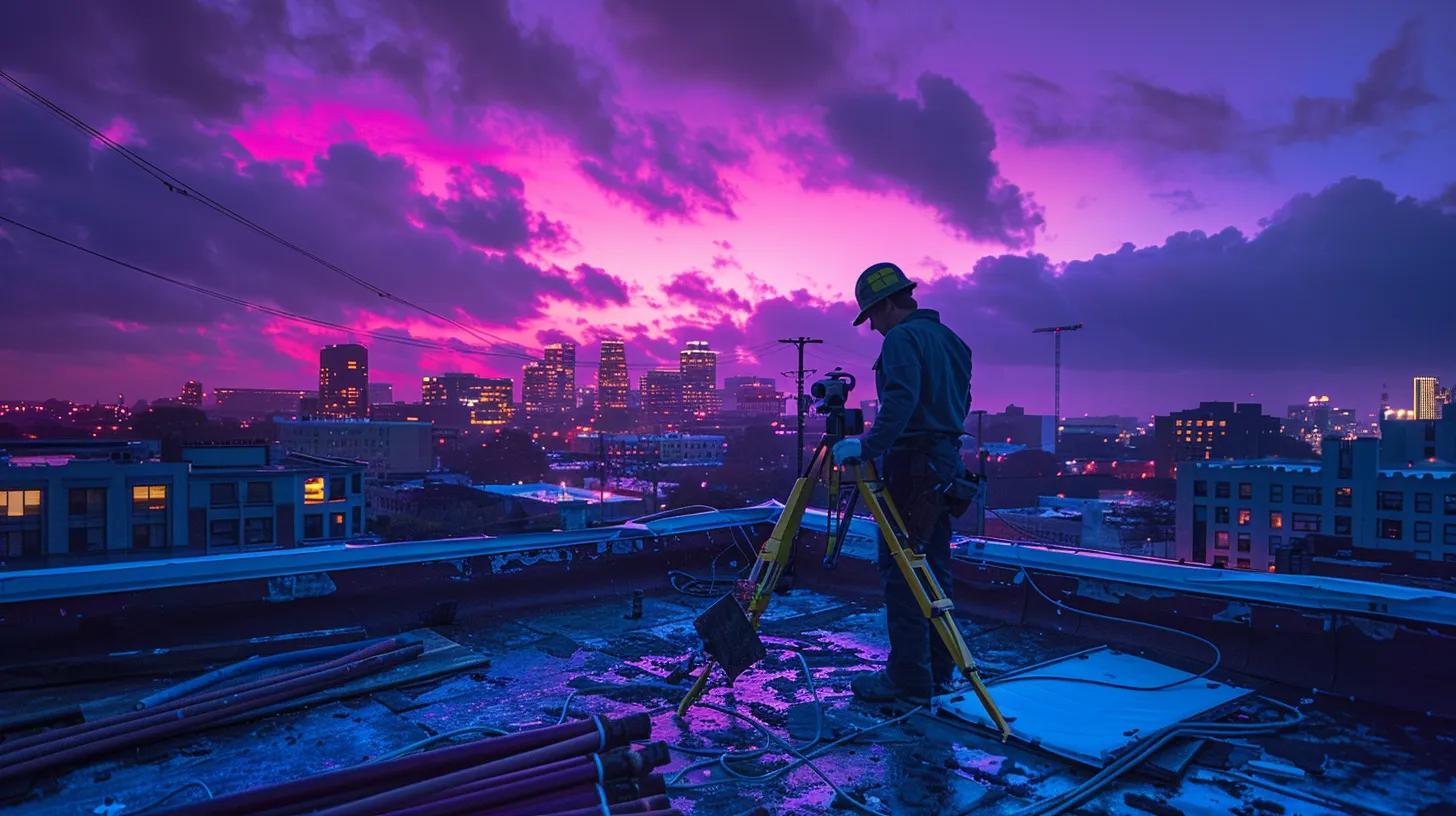
The process of emergency roof repair generally follows a systematic approach to quickly address and fix critical issues. The initial inspection phase is paramount; it sets the stage for determining the extent of damage and selecting the appropriate repair options. Professional roofers conduct a comprehensive evaluation, often using infrared scans and moisture meters, to identify not just visible, but also hidden damage. This initial assessment influences whether temporary patching or a permanent repair is executed.
Professional inspectors evaluate all aspects of the roof, examining shingles, flashing, and underlying structures. This assessment includes detailed measurements, visual inspections, and documentation of damage through photographs and videos. Using specialized tools, inspectors can detect moisture behind the roofing layers, underscoring the urgency of repairs. An accurate and comprehensive assessment ensures that all affected areas are addressed during the repair process and provides critical information to insurance companies for claims processing.
Temporary measures, such as tarping or applying waterproof sealants, provide immediate relief by preventing additional water damage and buying time until a permanent solution is implemented. While temporary repairs are crucial, homeowners must understand that they are not substitutes for long-lasting repairs. Permanent repairs involve replacing damaged materials with high-quality products designed to withstand extreme weather. Contractors typically outline both temporary and permanent solutions during the initial consultation to provide clarity on the repair process and projected timelines.
The materials selected for emergency repairs are critical to ensure that the repair can withstand subsequent weather events. High-performance sealants, quality asphalt or metal shingles, and reinforced flashing materials are standard choices. These materials are chosen for their durability, compatibility with the existing roof, and resistance to extreme conditions such as high winds and heavy rains. Contractors often use proprietary blends of sealants that offer superior adhesion and flexibility, crucial for areas that experience frequent temperature fluctuations.
Emergency roof repairs are designed to be swift. Typically, temporary repairs might be accomplished within 24 to 48 hours, while permanent repairs may vary depending on the extent of the damage. For instance, isolated leaks might be resolved in a couple of days, whereas extensive structural repairs could take up to a week or more. Quick restoration not only stops further damage but also minimizes disruptions to daily life. Detailed project timelines are communicated by the contractor, ensuring transparency through each stage of the repair process.
After the repair work is completed, a follow-up inspection ensures that no further damage remains that could lead to future complications. Many reputable emergencyroofing companies offer warranties or guarantees on their repair work, providing reassurance to homeowners. These post-repair inspections typically involve a detailed check of all restored areas to confirm that the roof is once again secure. Homeowners are encouraged to retain these documents for future reference, as they can also help during periodic preventive maintenance.
Key Takeaways: – A thorough initial inspection identifies both visible and hidden damage. – Temporary repairs act as a stopgap until permanent solutions are implemented. – High-quality materials ensure that repairs are durable and weather-resistant. – Clear timelines help manage expectations during the repair process. – Post-repair inspections and warranties offer ongoing protection and assurance.
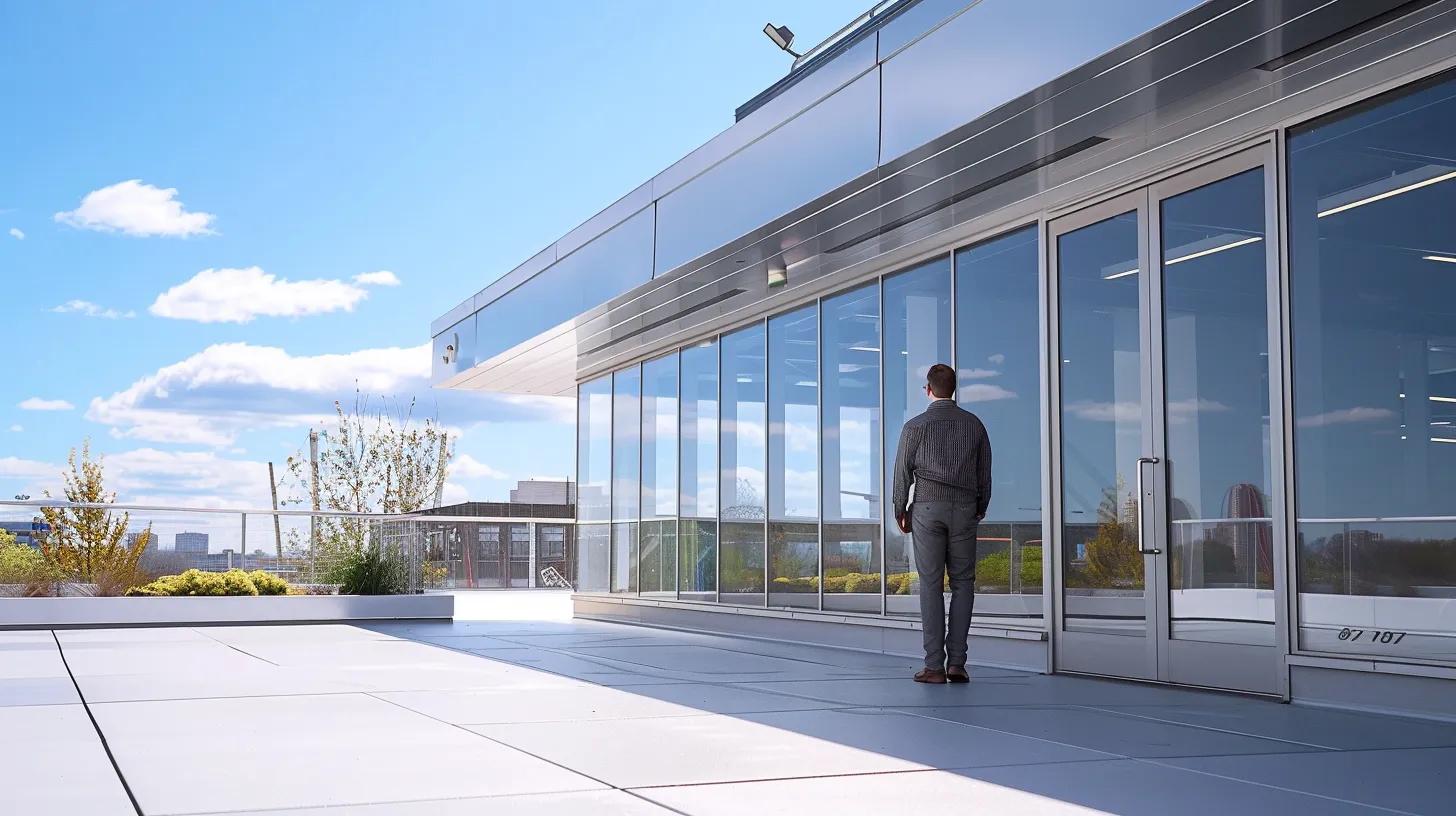
After addressing the immediate roofingemergency, proactive maintenance becomes essential to prevent future crises. Regular roof inspections, timely maintenance, and quality repairs significantly extend the lifespan of the roof and reduce the likelihood of severe weather-related damage. A proactive approach involves both routine actions and strategic upgrades designed to make the roof more resilient against extreme weather conditions and the cumulative effects of wear and tear.
Routine inspections by a professional are key to early identification of potential issues. It is recommended that homeowners schedule at least biannual inspections—once in the spring and once in the fall—to catch early signs of damage before they become emergency situations. Maintenance tasks may include cleaning gutters, resealing flashing, and replacing minor damaged shingles. Professional inspectors can detect subtle signs such as granule loss and curling shingles, which are indicators that the roof is beginning to deteriorate.
Investing in quality materials and undergoing routine maintenance significantly prolongs rooflongevity. Homeowners should use durable, weather-resistant materials such as high-quality asphalt shingles or metal roofing that are specifically designed for harsh climates. Additional preventive measures include applying reflective coatings to reduce heat absorption and installing proper ventilation to prevent moisture buildup. Keeping the roof clear of debris and trees that can cause damage also plays a pivotal role. Consistent maintenance—coupled with immediate repairs during minor incidents—ensures that the roof remains secure and efficient over the long term.
Early detection is crucial for effective prevention. Homeowners should be alert to subtle indicators such as discoloration, small leaks, or cracked caulk along the seams. Unusual noises during wind—like creaking or shifting—might also signal that the roof is struggling with structural stress. Periodic monitoring also involves checking the attic for signs of moisture or mold, as these symptoms can highlight insulation or ventilation problems that might compromise the roof’s integrity.
Proactive weatherproofing before the onset of severe weather seasons is one of the best investments a homeowner can make. This strategy includes ensuring that trim, flashing, and shingles are in optimal condition, as well as reinforcing vulnerable areas, such as around chimneys and vents. Installing redundant systems like additional downspouts and enhanced gutter guards can also reduce the risk of damage during heavy rains. In high-wind areas, extra measures such as hurricane straps or reinforcements to the roof’s support structure can offer additional stability.
Ultimately, the foundation of a resilient roof lies in the quality of its construction materials. High-grade asphalt shingles, metal roofs, and advanced waterproofing compounds may carry a higher initial cost, but they offer superior durability and lower maintenance requirements over time. In the long run, the initial investment in quality materials translates into reduced repair costs and a lower risk of emergencies, ultimately contributing to greater customer satisfaction and safety.
Key Takeaways: – Regular inspections and maintenance are critical to preventing roof emergencies. – Using high-quality, weather-resistant materials extends roof lifespan. – Early warning signs—such as minor leaks and discoloration—must be addressed immediately. – Proactive weatherproofing can minimize damage during severe weather. – Investing in quality materials reduces long-term repair costs and enhances safety.
Below is a table summarizing the common emergency roof issues and their typical solutions:
A table like this allows homeowners to quickly understand the standard repairs and materials used, helping them make informed decisions when contacting repair services.
Key Takeaways: – The table highlights standard repair types and solutions. – Repair timelines vary based on the extent of damage. – Quality materials and techniques are critical for lasting repairs. – Understanding common issues helps in communicating with contractors. – The estimated repair time and materials serve as a guideline for setting expectations.
Q: How quickly should I call an emergencyroofingservice? A: You should contact an emergency roofing service as soon as you notice any signs of significant roof damage, such as leaks, missing shingles, or structural distortions. Immediate action is critical to prevent further interior damage and to secure the structure before extreme weather worsens the situation.
Q: Can temporary fixes like tarpingreally prevent further damage? A: Yes, temporary fixes such as tarping and patching can help reduce water intrusion until permanent repairs can be performed. These measures are designed to buy time and minimize additional damage, though they are not substitutes for lasting solutions.
Q: How often should I have my roofinspected to prevent emergencies? A: It is recommended to have your roof inspected at least twice a year, typically in the spring and fall, and after major storms. Regular inspections help detect early warning signs of damage and ensure that minor issues are addressed before they escalate into emergencies.
Q: What qualifications should I look for in an emergencyroofingcontractor? A: When choosing a contractor, verify that they hold all necessary licenses and proper insurance, have a strong track record with customer testimonials, and offer clear, competitive quotes. Their experience with emergency repairs and transparent communication about timelines and warranties is essential.
Q: What types of materials are best for long-term roofdurability? A: Choosing high-quality roofing materials like premium asphalt shingles, metal roofing, or reinforced waterproof membranes can significantly extend the lifespan of your roof. These materials are designed to withstand extreme weather conditions, provide excellent protection against water intrusion, and reduce the need for frequent repairs.
Emergency roof repair is a critical service that protects your home’s integrity and minimizes further interior damage during severe weather events. By understanding the early warning signs and taking quick, strategic actions—from immediate temporary fixes to permanent structural repairs—homeowners can mitigate risks and reduce repair costs. Regular maintenance, proactive inspections, and a well-planned prevention strategy are the keys to long-term roof durability. Investing in quality repairs and materials not only ensures safety but also provides peace of mind during unpredictable weather conditions.
25 Chestnut St
Cooperstown NY 13326
Mon - Sat 9am- 5pm
Sun Closed
Call us for a free estimate
607-760-8100